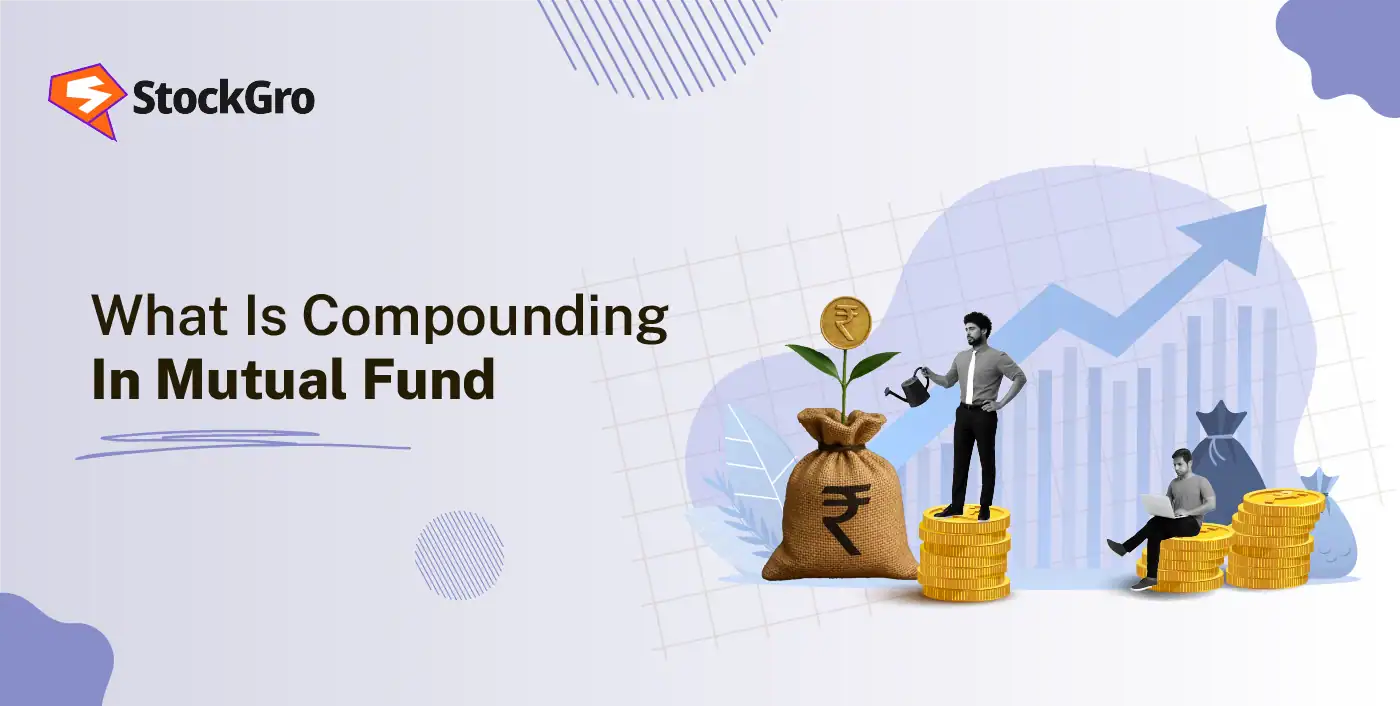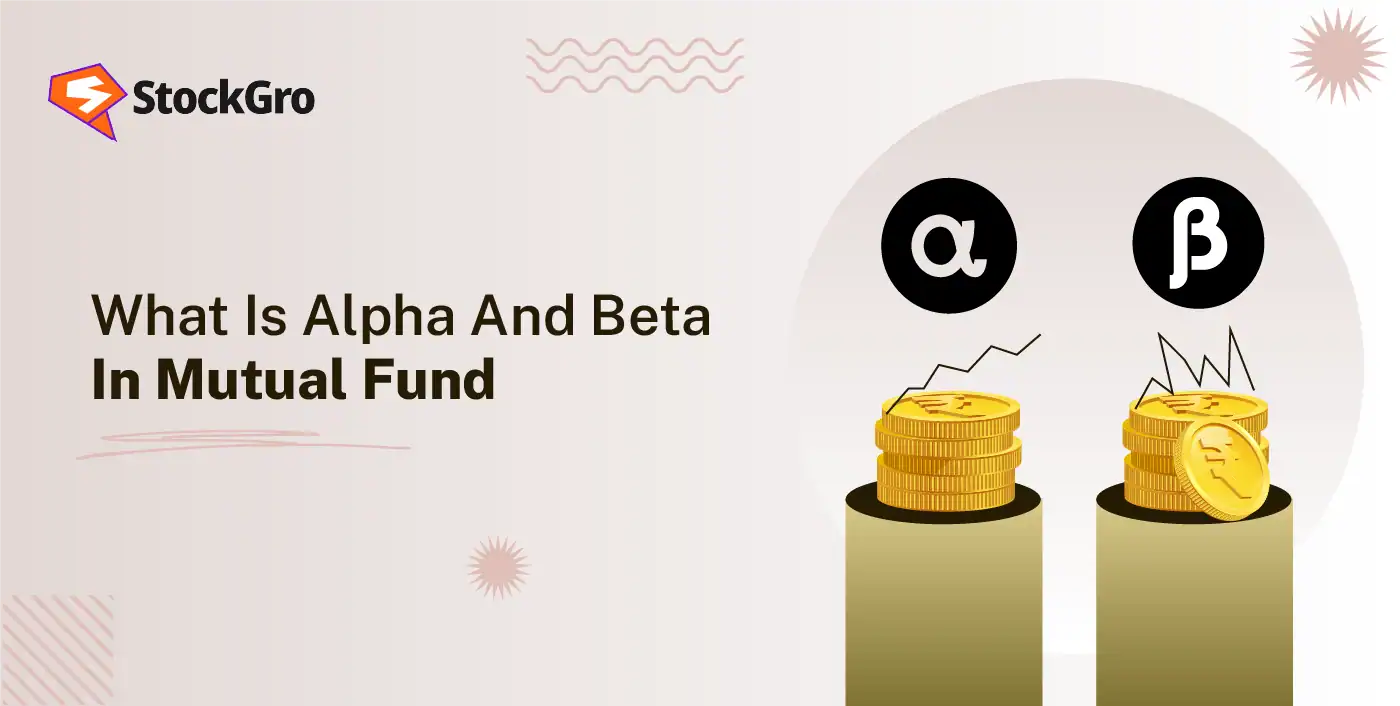
Compounding in mutual funds is a process where any earnings like dividends, interest, or an increase in the fund value continue to be invested so that future returns are calculated on an increasing base amount.
Investing regularly through a SIP grows your money and benefits from compounding, which over time leads to higher returns and faster wealth creation. Understanding this concept is essential for building steady wealth and reaching long-term financial goals. Read now!
What Is Compounding in Mutual Funds?
Compounding means your investment earns returns, and those returns also earn more over time. In mutual funds, reinvesting dividends and gains helps your money grow faster. Regular SIP investments increase your principal, making compounding work even better to build wealth steadily and reach long-term goals.
Over time, this leads to exponential wealth accumulation. The longer you stay invested, the stronger the compounding effect. However, since mutual funds are market-linked, returns can fluctuate. Staying invested for the long term helps you maximise the benefits of compounding. Starting early and consistent contributions are key to building wealth.
How Compounding Works in Mutual Funds
Compounding in mutual funds means your returns generate more returns over time, growing your investment exponentially. This happens when earnings like dividends and gains are reinvested, and regular SIPs add to your principal.
Suppose you invest ₹5,000 every month through SIP for 10 years, expecting an average annual return of 12%.
In 10 years, you will have invested ₹6,00,000 (₹5,000 × 12 months × 10 years).
Let’s see how your investment grows each year, with returns compounding over time to increase your total value beyond the amount you invested.
| Year | New SIP Added (₹) | Previous Year’s Value (₹) | Total Invested till Year (₹) | Value at Year-End (₹) |
| 1 | 60,000 | 0 | 60,000 | 64,047 |
| 2 | 60,000 | 64,047 | 1,24,047 | 1,36,216 |
| 3 | 60,000 | 1,36,216 | 1,96,216 | 2,17,538 |
| 4 | 60,000 | 2,17,538 | 2,77,538 | 3,09,174 |
| 5 | 60,000 | 3,09,174 | 3,69,174 | 4,12,431 |
By the end of 10 years, your investment could grow to ₹11,61,695, showing how compounding amplifies returns.
This happens because early returns start earning on themselves, creating a snowball effect. The longer you stay invested and keep contributing regularly, the more powerful compounding becomes, helping your money grow steadily over time.
Formula & Example (Using NAV, Dividends, SIP)
Regularly investing in mutual funds through a SIP provides a structured and consistent approach for gradually increasing wealth, as it harnesses the power of compounding to enhance long-term growth. To really understand how your investment grows, it’s useful to grasp the roles of the SIP formula, NAV, and dividends.
SIP Formula:
The maturity value of a SIP investment is estimated using the formula:
M = P × ((1 + i)^n – 1 / i) × (1 + i)
Where:
- M = Maturity amount after all installments
- P = Monthly SIP amount
- i = Monthly rate of return (annual return divided by 12)
- n = Number of installments (months)
For example, if you put ₹1,000 regularly every month for 12 months and you get an annual return of 12%, your monthly return will come to approximately 0.95%, and your total corpus after one year will be ₹12,766.
Understanding NAV:
Net Asset Value (NAV) is the daily value of a mutual fund unit, changing with market fluctuations. In a SIP, a fixed investment buys more units when NAV is low and fewer when NAV is high, which averages out your cost over time, a concept called rupee cost averaging.
Dividends and Reinvestment:
Some mutual funds pay dividends that you can reinvest to buy more units. This boosts compounding and, along with SIPs and NAV benefits, helps build a strong corpus for long-term goals like retirement or education.
Benefits of Compounding in Mutual Funds
Compounding in mutual funds allows your investment to grow faster because you earn returns on both your initial amount and any previous earnings that are reinvested. This can help even small, regular investments become much larger over time.
- Wealth Growth: The returns that are reinvested generate more returns, hence creating a snowball effect, which makes the growth of your investment over time faster.
- Long-Term Advantage: Compounding becomes more powerful the longer you are invested, making it ideal for achieving long-term financial goals.
- Risk Mitigation: Compounding allows your investments to grow at a pace that can outstrip inflation, helping not only to maintain but also to enhance your overall purchasing power over time.
- Encourages Discipline: Regular investments through SIPs become a steady saving habit, and you can accumulate wealth without the need to time the market.
- Higher Returns with Small Amounts: Small, regular investments can turn into a large sum over time as a result of the exponential effect of compounding.
Compounding Through SIPs: The Snowball Effect
Investing in mutual funds via a SIP enables consistent wealth growth by leveraging compounding, where returns are reinvested and generate additional earnings over time. Regular fixed investments buy more units when prices are low and fewer when prices are high, smoothing out costs and reducing market volatility impact. This continuous reinvestment leads to a snowball effect, accelerating wealth creation.
To maximise benefits, start early, invest regularly, and stay invested long-term. Even small monthly contributions can grow into substantial sums for goals like retirement or education funding.
For instance, you start a SIP of ₹2,000 per month, and assume the mutual fund gives an average annual return of 12%.
The yearly SIP investment is:
₹2,000 × 12 months = ₹24,000 per year.
You plan to stay invested for 20 years, so the total amount invested will be:
₹24,000 × 20 years = ₹4,80,000.
This shows how consistent investing combined with compounding can significantly boost your wealth over time, growing your money far beyond the total amount invested.
At an average return of 12%, the investment will grow to nearly ₹19,98,296 in 20 years, due to the power of compounding, which means your money has grown by approximately 4 times (or 416%) over your original investment.
On the other hand, if you invest ₹2,000 per month for 10 years at the same rate of 12%, the total investment will be ₹2,40,000. By the end of 10 years, this can grow to about ₹4,64,678, which is roughly 193% growth over your invested amount.
This clearly shows how a longer investment horizon dramatically increases wealth creation through compounding.
Compound Interest vs Simple Interest
To understand the power of compounding in mutual funds, it’s important to first see how compound interest differs from simple interest.
| Aspect | Simple Interest | Compound Interest |
| Calculation Basis | With simple interest, earnings accrue solely on the amount initially invested, not on any interest that has been previously earned. | In compound interest, returns are earned not just on the original invested amount, but also on any interest that has accumulated over time. |
| Growth Pattern | Grows linearly, with fixed interest over the period. | Compound interest allows your earnings to build on both your original investment and prior interest, leading to much faster growth over time. |
| Interest on Interest | No interest earned on the accumulated interest. | Interest is earned on previously accumulated interest (interest on interest). |
| Returns | Yields lower returns over time since interest is not compounded. | Typically yields higher returns due to compounding effects over longer terms. |
| Common Use Cases | Suitable for short-term loans and fixed deposits. | Commonly used in long-term investments and savings accounts. |
| Effect of Time | Total interest remains consistent over the duration. | Total interest increases as compounding periods progress. |
Factors Influencing Compounding
Compounding in mutual funds depends on how long you invest, the returns you earn, how often gains are reinvested, and how regularly you add new money. Knowing these factors can help build more wealth over time.
- Initial Investment Amount: The amount invested at the start forms the foundation for compounding. With a larger starting capital, there will be a larger scope for growth, as the returns will be accumulated.
- Rate of Return: The speed of compounding is greatly influenced by the investment’s rate of return; while higher returns can boost growth, it is important to consider the associated risks as well.
- Investment Duration: Time is one of the powerful components in compounding. Investments held for a longer time have a greater potential for growth, as compounding has more opportunities to amplify returns over the years.
- Regular Contributions: Consistency, such as investing through SIPs, and reinvestment of gains ensure compounding remains active and continual, steadily building wealth.
- Inflation and Taxes: Real growth from compounding can be affected by inflation and taxes. Managing these wisely helps preserve and boost long-term returns.
Rule of 72: Estimating Doubling Time
The Rule of 72 offers an easy way to estimate how many years it will take for an investment to double, simply by dividing 72 by the expected annual rate of return. To apply the rule, you just need to divide 72 by the expected rate of return each year in percentage terms. This calculation provides a simple estimate of how many years it will take for the investment amount to double.
Example: For example, with an annual return of 8%, using the Rule of 72 shows that your investment would take about 9 years to double in value (since 72 divided by 8 equals 9).
However, actual results may vary due to market fluctuations and fees, so the Rule of 72 serves as a useful guideline rather than an exact prediction.
Conclusion
Compounding within mutual funds can boost wealth as returns accumulate and grow on both the principal and past earnings over time. By reinvesting earnings and regularly investing through SIPs, your returns grow exponentially. Although market fluctuations exist, maintaining a consistent, long-term investment strategy helps you unlock the full benefits of compounding and move closer to your financial goals.
FAQs
When talking about a mutual fund, compounding means that an investor will be getting returns on both their original principal and any reinvested returns, enabling growth to accelerate as each year’s gains generate further returns over time.
Compounding is different from simple interest as it earns interest on both the original amount and accumulated interest, thus resulting in exponential growth. Simple interest is computed only on the initial amount, resulting in linear growth without earning interest on past returns.
Yes, compounding is possible in SIP investments as well. A disciplined investment of a fixed sum in mutual funds regularly allows returns to be reinvested, and this leads to exponential growth over time. The longer the investment period, the more powerful the compounding effect becomes.
Time matters in compounding because the longer money is invested, the more returns generate further returns, accelerating growth exponentially. Early and consistent investing allows compounding to build wealth significantly over time by harnessing this cumulative effect.
The Rule of 72 is a simple formula used to estimate the number of years it takes for an investment to double at a fixed annual interest rate. Divide 72 by the interest rate to find the approximate doubling time. It’s useful for quick mental calculations in investing.
It is important to note that returns from a mutual fund after compounding are not guaranteed. The value of investments bought goes up and down due to market dynamics, so returns are ultimately dependent on the performance of the asset. Compounding helps grow returns over time, but market risks mean there is no assured fixed return.
Fees and taxes reduce compounding growth by decreasing the money invested. Fees directly cut returns, while taxes take away gains, both shrinking the amount that earns future returns. This degradation of the total amount diminishes the overall growth potential of compounding over time.

